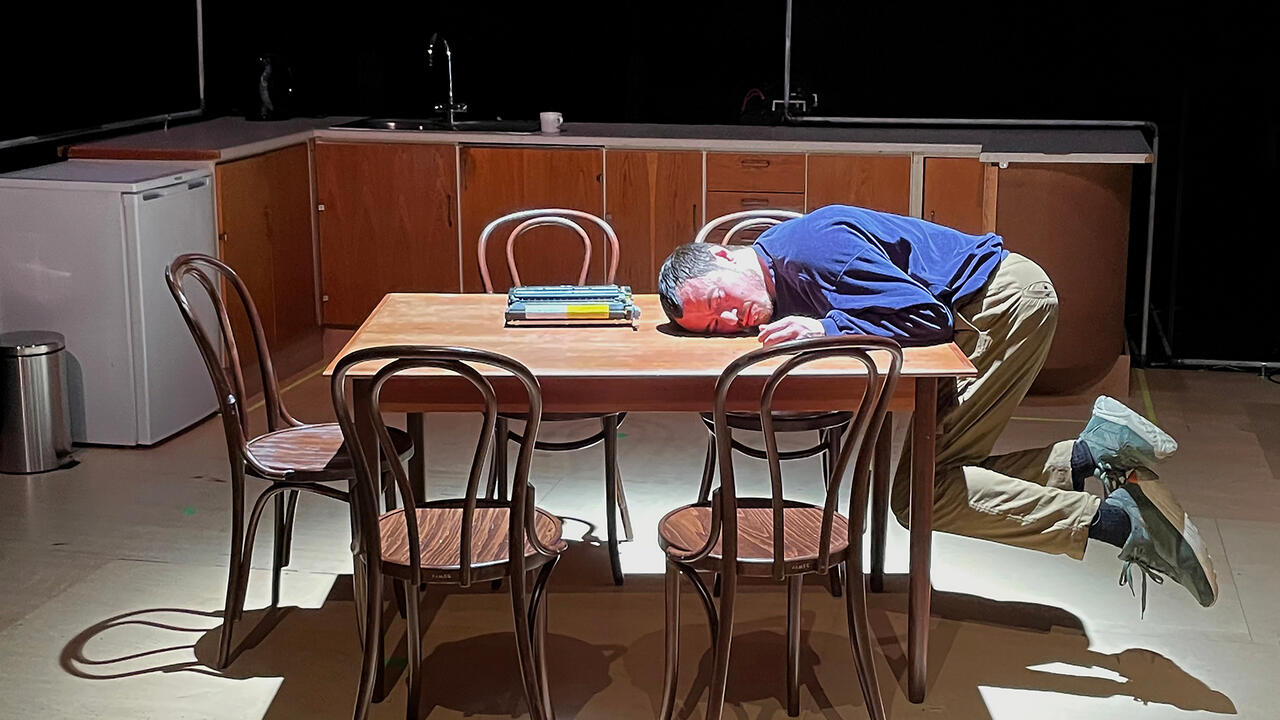Mika Rottenberg on Filming the ‘Vibration and Flux’ of Global Capitalism
The artists speaks to Steven Zultanski from the set of her new film in Tivoli, New York
The artists speaks to Steven Zultanski from the set of her new film in Tivoli, New York

Mika Rottenberg’s films are propelled by kinetic movement – objects and people are in continuous motion, mechanically hustling from one place to another. In many of her works, this relentless activity involves both the concrete toil of labour and the abstract operations of supply chains. In one early film, Mary’s Cherries (2004), women on stationary bikes assemble inscrutable objects (fake nails crushed into clay) and pass them to each other through holes in the floor, as if on a vertical assembly line. In NoNoseKnows (2015), a woman with a growing, Pinocchio-like nose sits in an office where allergenic flowers on her desk cause her to repeatedly sneeze up plates of noodles, which she then sets aside, presumably for sale. And, in the more recent Spaghetti Blockchain (2019), the camera pans from room to room in an ‘antimatter factory’, where various actions are deliberately repeated to no clear end: jelly is sliced, foam is dissolved, men’s heads are spritzed with spray-on hair.
I called Rottenberg one afternoon while she was in Tivoli, New York, where she was constructing sets for her first feature – a collaboration with producer Mahyad Tousi – that will premiere in October at Louisiana Museum in Denmark. She framed her interest in movement to me in terms of the absurdly complex networks of global capitalism, but also in terms of the discoveries in contemporary physics that suggest there are no individual things, whether subject or object: ‘Everything is in vibration and flux: there are no stationary things in nature. Even ideas are not stationary for me. There’s something about perpetual motion that is important conceptually.’

In Spaghetti Blockchain, this philosophical interest in bleeding-edge science is literalized: the film includes stunning shots of thousands of servers humming in the CERN Large Hadron Collider, which the artist describes as ‘the biggest machine ever made to find the smallest particle ever discovered’. Because of the title, the viewer might be led to wrongly assume (as I did) that these are images of a cryptocurrency server farm. This is precisely the ambiguity that Rottenberg intended to provoke: both the particle collider and the crypto farm require massive amounts of equipment, money and energy to produce information that is difficult to grasp because it’s simultaneously highly abstract and intensely material.
The artist connects the difficulty of wrapping one’s head around the mechanics of the subatomic world to the difficulty of rendering a shape for obscure economic processes: ‘I’m fascinated by unmanifested things that become manifested. Capitalists try to do it when they sell happiness. My work has always been about extraction and the creation of monetary value – or cultural value, which is the same in our society.’ This isn’t a naturalization of capitalism, or a claim that the complexities of value are the same as the complexities of nature; rather, it’s an earnest attempt to give shape to processes that escape figuration but which nonetheless determine the contours of our lives.

In this way, the almost madcap motion in Rottenberg’s films is a kind of realism. Even though the individual shots are long, the films are overflowing with more colour, physicality and motion than the eye can easily process. Her upcoming feature with Tousi will be more narrative than previous works, but her interest in delirious interconnectedness and hidden materialities still animates the project: ‘In short, it’s about five people spread around the world, who are connected by being fans of the same Korean dog-grooming show. Through that, they discover they’re all also linked through a hidden portal in their homes.’
This will be the first time Rottenberg has worked with professional actors – previous projects saw her collaborate mainly with exhibitionists that she met online – but her approach to directing is still rooted in trust, asking people to primarily appear as themselves: ‘I put someone in a situation, and they don’t need to be anyone other than who they are. And the viewer doesn’t know who they are. Good actors don’t act: they just embody the part. They just need to do the tasks, and I don’t care what they think about, because it’s their space. Like anything: the less you do, the better. Find the right person for the part and they don’t need to do much except be who they are.’

This reasoning points to a subtle tension in Rottenberg’s work: despite their incessant activity, her actors appear calm in the midst of frenetic movement. They aren’t analyzed or dissected by the camera; they retain their privacy. The structural and economic connectivity that defines contemporary life – and which is undergirded by a very different, more ancient form of physical connectivity – is impersonal, though the personal hides within it. Rottenberg’s work respects the individual agency of people and things by not attempting to extricate that which is hidden and psychological; instead, it maps structures that are external but nonetheless hard to see.
Main image: Mika Rottenberg, Spaghetti Blockchain, 2019, video still. Courtesy: © the artist and Hauser & Wirth






















